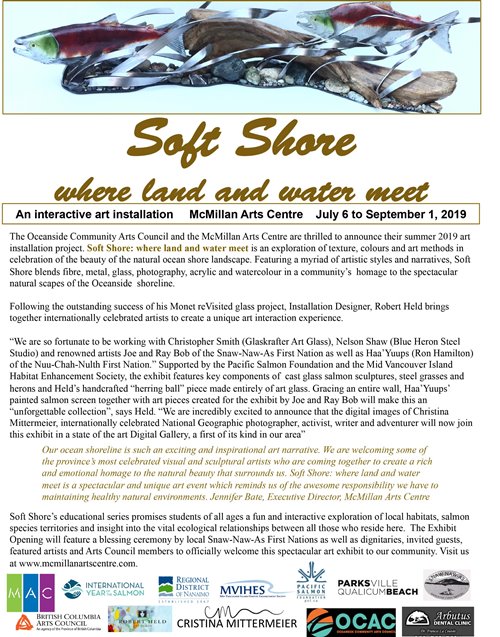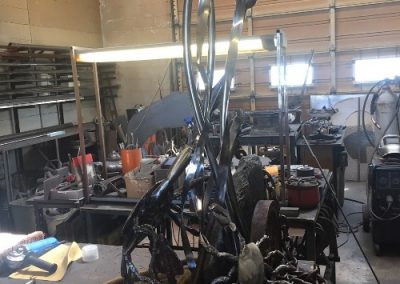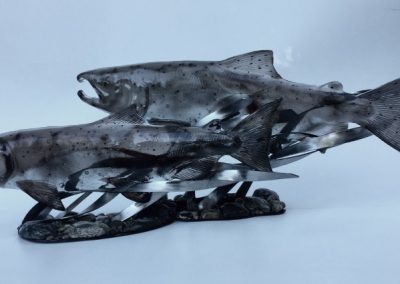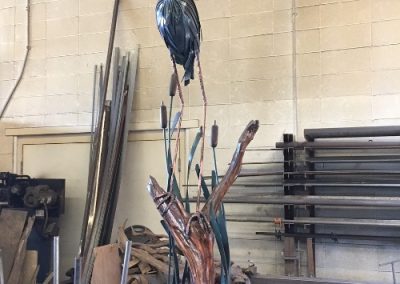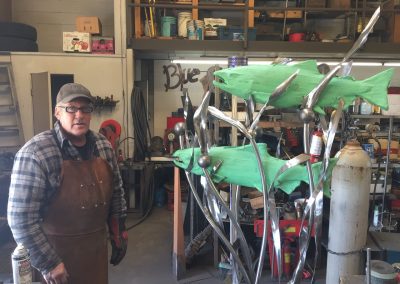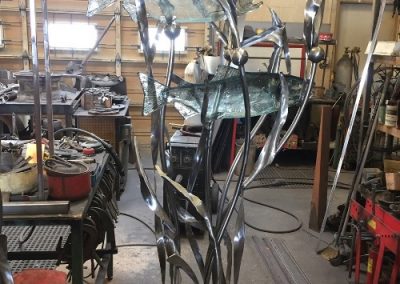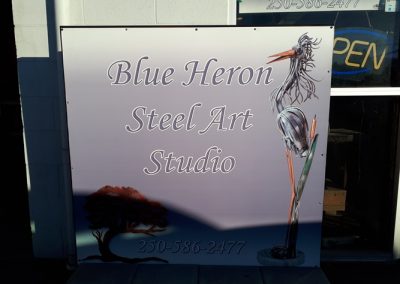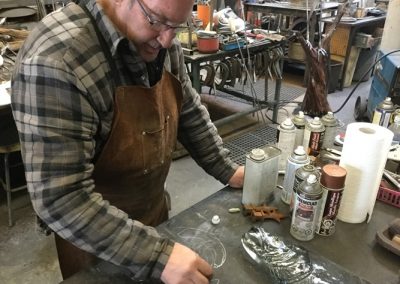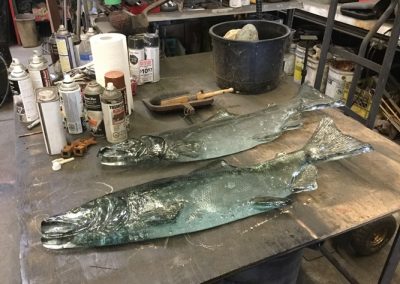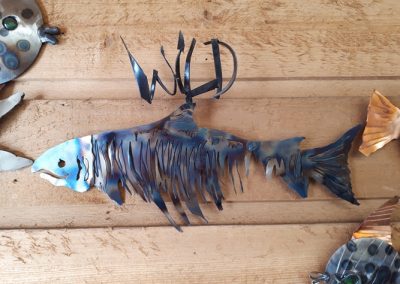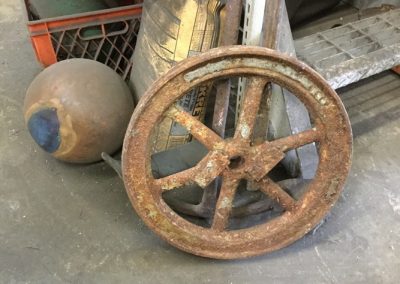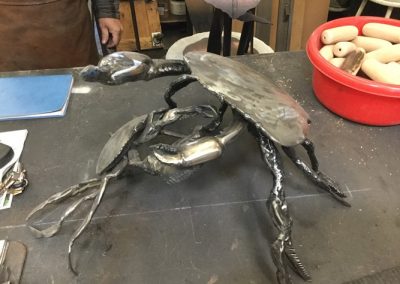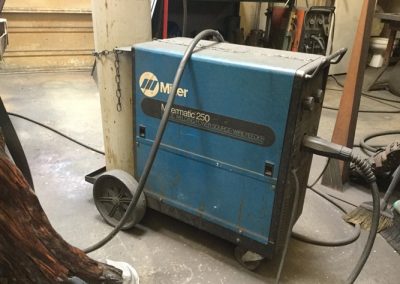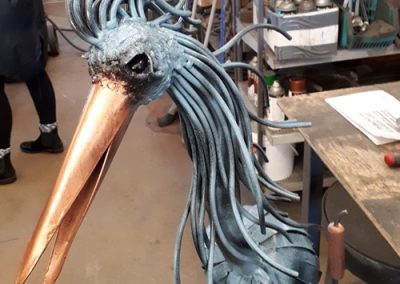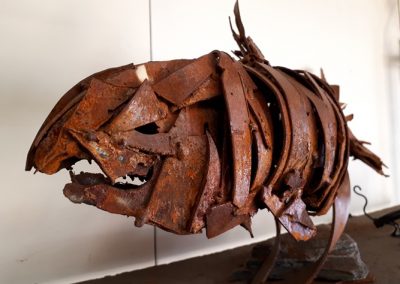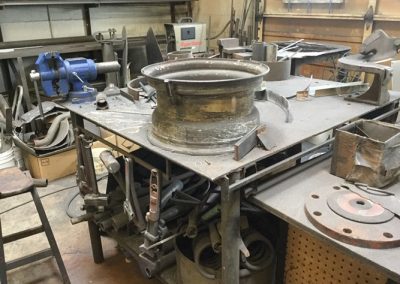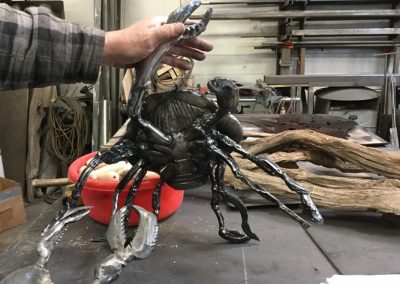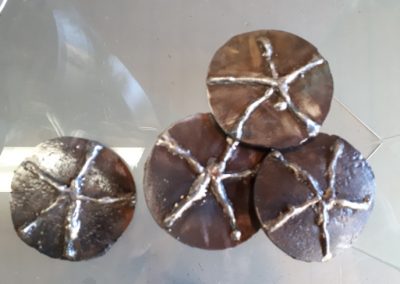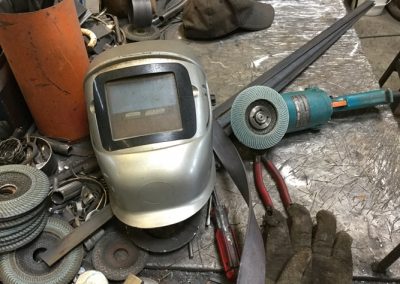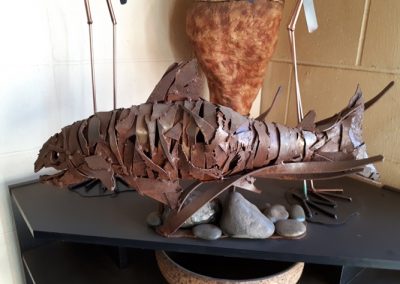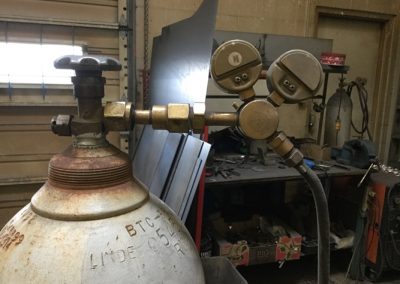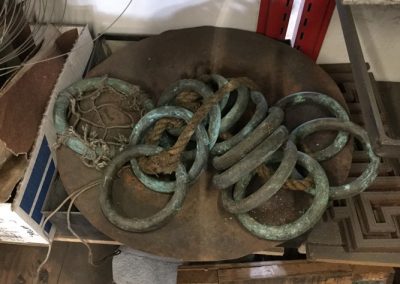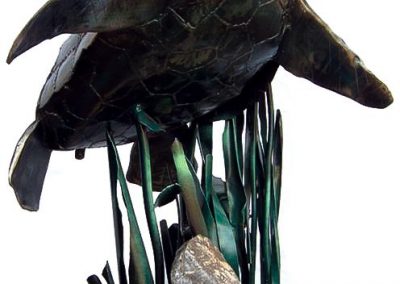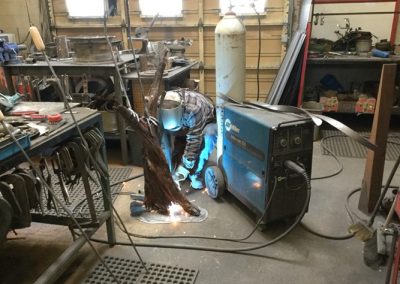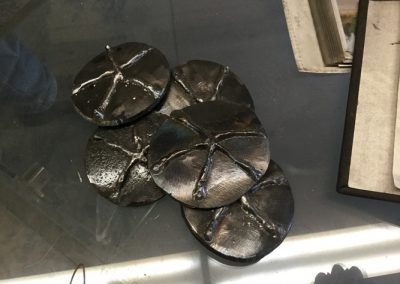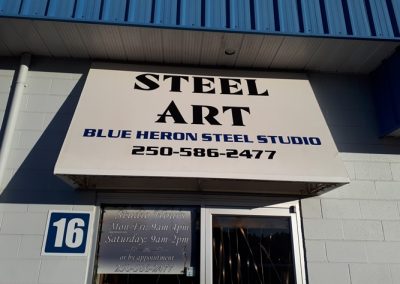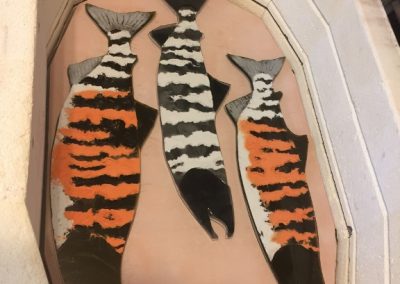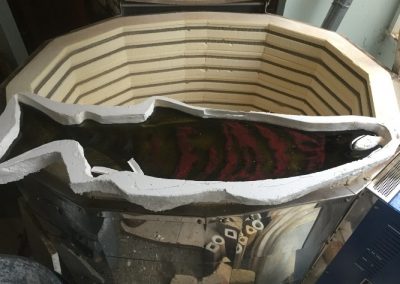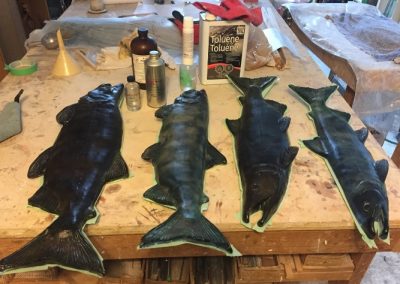Soft Shore Installation Updates
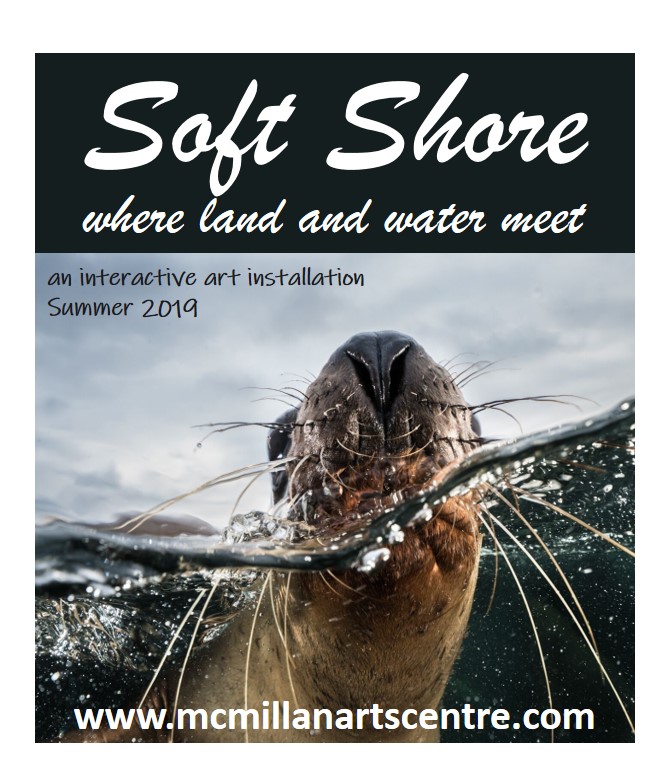
Soft Shore Artists Preview
Take a closer look at the artwork by the artists exhibiting in this summer’s installation – Soft Shore: where land and water meet.
Video by Andrew Collins
Soft Shore Opening
Thanks to Andrew Collins for sharing this video of our Soft Shore Opening Reception. Enjoy!
A Team of Celebrated Artists
On the heels of last summer’s celebrated Monet reVisited exhibition with artist Robert Held, Jennifer Bate, Executive Director of the MAC, invites you to join us for this summer’s major installation, ‘Soft Shore: where land and water meet’ featuring a team of celebrated artists.
Works in Progress
Artists are working hard on pieces for our upcoming installation. Here you can see some of the chinook pieces created by Christopher Smith and their supportive nestling steel kelp created by Nelson Shaw. Note the heron on the background.
These are two of the artists featured in this summer’s Soft Shore: where land and water meet. Keep watching for more updates!
New Digital Media Gallery
Jennifer Bate, Executive Director, announces the opening of our new Digital Media Gallery at the MAC, and our first exhibitor gallery; Cristina Mittermeier.
The Digital Media Gallery will be open at our Soft Shore installation this summer.
“Final Creation”
Artist Christopher Smith (Glaskrafter Art Glass) describes the final steps in completing a glass salmon piece.
“A lot of what I do is intuitive”
Steel artist Nelson Shaw talks about his process
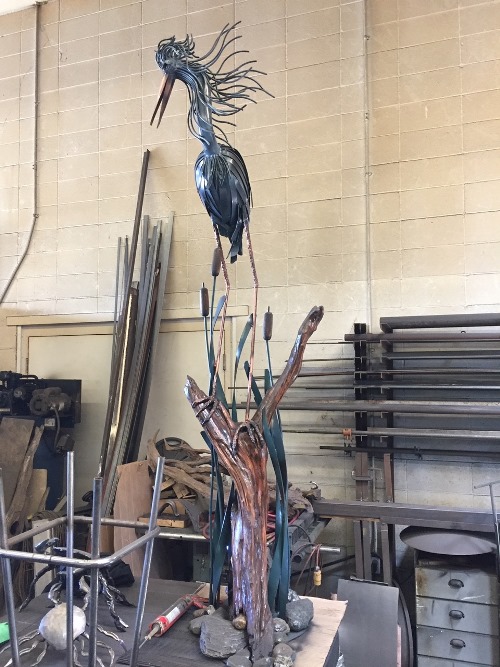
“We have one minute”
Glass Artist Robert Held describes the process for casting the herring he is creating for Soft Shore
Chinook
Chinook in kelp going after the herring.
Beautiful piece cast by Christopher Smith and just finishing up in Nelson Shaw’s studio
‘Everybody Needs a Steel Artist’
How do you display a 24-pound glass salmon? Enter Nelson Shaw of Blue Heron Steel Art Studios.
“All sculptors are trying to defy gravity”
Profile – Cristina Mittermeier
Sea Legacy
“To roam the farthest corners of the Earth, where wild creatures live, is a privilege reserved for an adventurous handful. But even though most of us may never feel the chill of Arctic air through the frozen flap of an icy tent, images can help us understand the urgency many photographers feel to protect wild places. My work is about building a greater awareness of the responsibility of what it means to be a human. It is about understanding that the history of every living thing that has ever existed on this planet also lives within us. It is about the ethical imperative—the urgent reminder that we are inextricably linked to all other species on this planet and that we have a duty to act as the keepers of our fellow life forms.”
Cristina Mittermeier is a contributing photographer, speaker, and explorer for National Geographic. She is the founder and President of SeaLegacy, a non profit organization working to protect the oceans.
A virtuous mind and voice in conservation photography and one of the most influential female photographers in the world, Cristina Mittermeier has been hailed as one of the most important outdoor photographers of her generation.
Cristina first discovered her insatiable passion for the natural world, both above and below the surface, as a Marine Biologist working in the Gulf of California and the Yucatan Peninsula. From there, it didn’t take her long to realize that she could make a more significant impact on how people see the world, and connect to it, through the lens of her camera than she could with data on spreadsheets.
Today, Cristina is the Co-founder and Vision Lead of the conservation society, SeaLegacy, National Geographic contributing photographer, a Sony Artisan of Imagery and the editor of 26 coffee table books on conservation issues. She is the first female photographer to reach 1M followers on Instagram and was a 2018 National Geographic Adventurer of the Year. Cristina is a sought-after Keynote Speaker, Presenter and Panelist at events including the Women in the World 10th Anniversary Summit, Global Climate Action Summit, the Convention on Biological Diversity and the TEDx stage. She is acknowledged as one of the most Influential Women in Ocean Conservation in 2018 by Ocean Geographic, and The Men’s Journal recently named her as one of the 18 Most Adventurous People in the World.
Cristina’s work is regularly featured in Fine Art exhibitions around the world including one at Fotografiska in Stockholm, Sweden, where she also launched her art photography book, Amaze. The book is an inspiration for sustainable living with others and our environment that captures Cristina’s vision of creating a deeper sense of connection between humans and the environments in which we live.
Cristina has worked in more than 100 countries on every continent in the world. Her work is about building a greater awareness of the responsibility of what it means to be a human. It is about understanding that the history of every living thing that has ever existed on this planet also lives within us. It is about the ethical imperative—the urgent reminder that we are inextricably linked to all other species on this planet and that we have a duty to act as the keepers of our fellow life forms.
Cristina has three grown children, each pursuing careers in science and conservation. She lives on Vancouver Island, British Columbia, Canada, with her partner, National Geographic Photographer, and Filmmaker, Paul Nicklen.

Cristina Mittermeier; Portrait on a Fishing Vessel – photo by Paul Nicklen
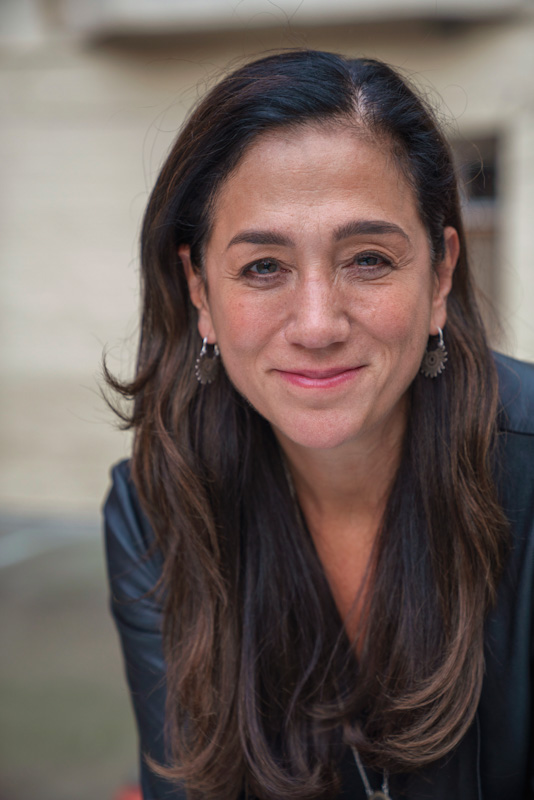
Cristina Mittermeier – Photo by Paul Moon
Each One is Unique
Christopher Smith casts each of his salmon with individual characteristics, starting from actual drawings of salmon created by Harry Heine for the DFO. In this video, he explains how he goes about turning a 2 dimensional drawing into a unique glass salmon.
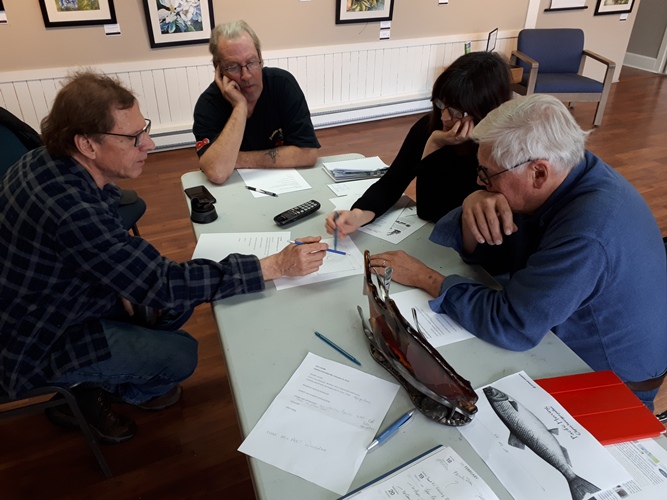
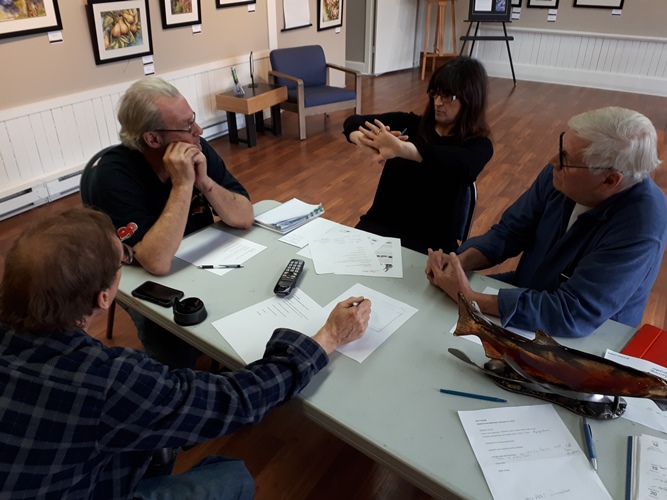
A Unique Collaboration
What exciting discussions are going on as this installation is being planned! In the photos to the left, artists Robert Held, Christopher Smith and Nelson Shaw are working with MAC Executive Director Jennifer Bate to design this summer’s Soft Shore Installation. How will it all go together? What’s the effect we are looking for? Top photo clockwise from top – Nelson Shaw, Jennifer Bate, Robert Held, and Christopher Smith.
In the video below, glass artist Robert Held describes his ‘Herring Ball’ feature in the Soft Shore installation and talks about this unique collaboration of artists.
Profile: Nelson Shaw, Steel Artist
Blue Heron Steel Studio
“All sculptors are trying to defy gravity”
Nelson Shaw is a steel sculpture artist based in Parksville, B.C. at his Blue Heron Steel Studio. Nelson gained his Master of Fine Arts Degree from Ohio State University in 1991 after receiving his undergraduate degrees in Fine Arts (University of Calgary) and Education (Malaspina College). Nelson has exhibited his steel art across Canada and the northern US and has lectured in Canada, the US and Poland. As an Exhibit Coordinator and Technician, Nelson has influenced curriculum, instructed in a variety of art mediums and assisted with the curation of many exhibitions.
Artist Statement
Conceptually, my art exhibits an undercurrent of the visual aspects I observe in nature. Basic elements of colour, line and texture are a constant in my sculpture and two-dimensional studies. Raised on the Prairies, I first experienced Vancouver Island in the late seventies. It was still a mystical, enchanting and lush environment overwhelming in its beauty.
Now, in a sad way, this special place has been discovered by so many bringing development and change. The quiet and solitude of these rivers, creeks and forest are being eroded at an alarming rate. I hope this exhibition will help educate and focus attention on how fragile and precious this unique environment is to all of us.
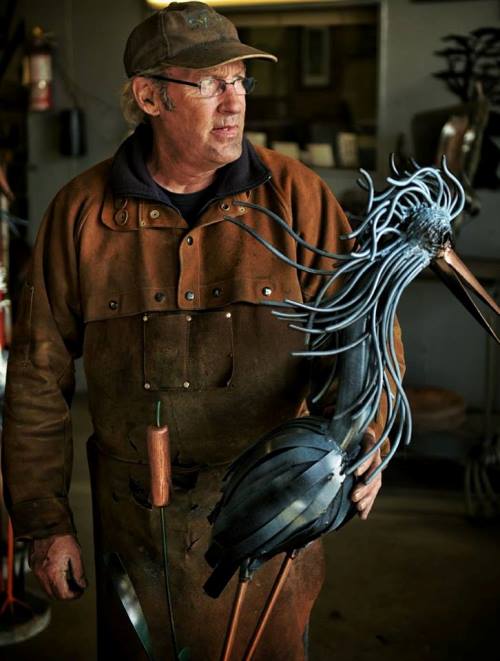
Profile: Haa’Yuups (Ron Hamilton)
Nuu-Chah-Nulth First Nation
Haa’Yuups has been considered a leading Indigenous artist, scholar and historian for more than three decades now. He has previously worked with officials from the National Museum of the American Indian in Washington, D.C., London’s British Museum, Paris’ Musee de l’Homme and Mexico’s Museo Nacional de Antropologia.
Haa’Yuups is also the subject of ‘Histakshitl Ts’awaatskwii’, an hour-long documentary film that follows the re-making of a small
The screen Haa’Yuups will be creating a screen (curtain) for our Soft Shore project featuring the salmon. This curtain will be 6 ft tall and 10 feet wide.
You can read more about Haa’Yuups here:
B.C. Nuu-chah-nulth artist named co-curator of NYC museum restoration project

First Nations Connections
We are very happy to announce a number of First Nations artists and community members who will be involved in this art installation.
In this video, Christopher Smith shares his thoughts on the importance of salmon in First Nations culture and why he creates glass
Watch for the next update coming soon; a profile of Haa’ Yupps (Ron Hamilton), a distinguished artist of the Nuu-Chah-Nulth First Nation.
Introduction from Christopher Smith
What will this Soft Shore art installation look like? Here’s how Christopher Smith describes it.
Profile: Robert Held
Glass Artist, Installation Designer
Born in Santa Ana, California, Robert Held aspired to be an artist from an early age. His father, a sculptor, only lived six years of his son’s
He obtained a Master’s Degree in Fine Arts from the University of Southern California, specializing in ceramics. In 1968, he discovered a new love: the art of glassblowing.
His collections range from classic to contemporary. Some works are inspired by the paintings of famous artists such as Monet and Klimt, while others take inspiration from photographers and even interior designers.
Robert’s glass work has also been chosen for many prestigious awards and collections. His goblets were selected to grace the table of the Governor General’s “Perfect Setting” and his newest commissioned piece: a glass bowl encasing 23rd karat gold maple leaves and sparkling dichroic glass now sits in Her Majesty’s Royal Collection.



Life Cycle of a Glass Salmon
How are glass salmon made? Christopher Smith explains
Each fish is one of a kind. I begin by carving a clay salmon. I give this clay fish as much character and detail as I can. This is what my finished cast glass surface will be like.
When I’m happy with my clay fish, I’ll coat him or her in a plaster/refractory mix. When that sets, I’ll weed the clay from the
In the meantime, I will have fused a glass fish skin, giving it the colouration and surface iridescence that I want. The
When cool, the glass filled
I then hand the Glass Salmon over to steel sculptor Nelson Shaw for the creation of the metal reed grass bases. Presented with the original concept of how the bases should look, Nelson will add his creativity to the individual personality of each Salmon sculpture. Finally, I collect, glue river rocks to the base and clear coat the steel to complete the work.

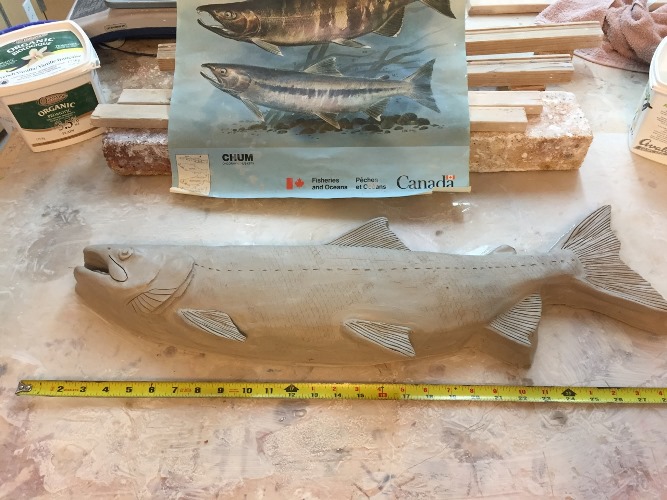
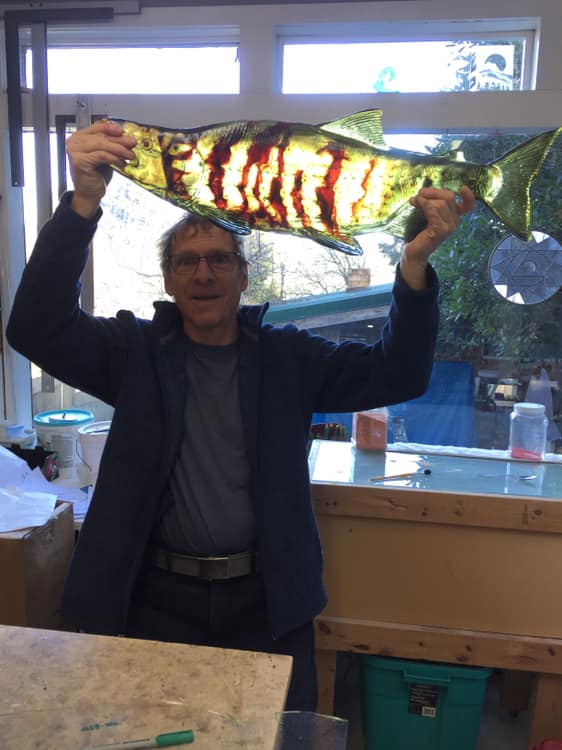
31″ and 7 kg of solid glass
Glass Chum on Display
It’s coming! Artists are hard at work preparing pieces for our Soft Shore art installation this summer.
This beautiful glass Chum Salmon by Christopher Smith of Glaskrafter Art Glass is now on display in the Oceanside Gallery.
$3200
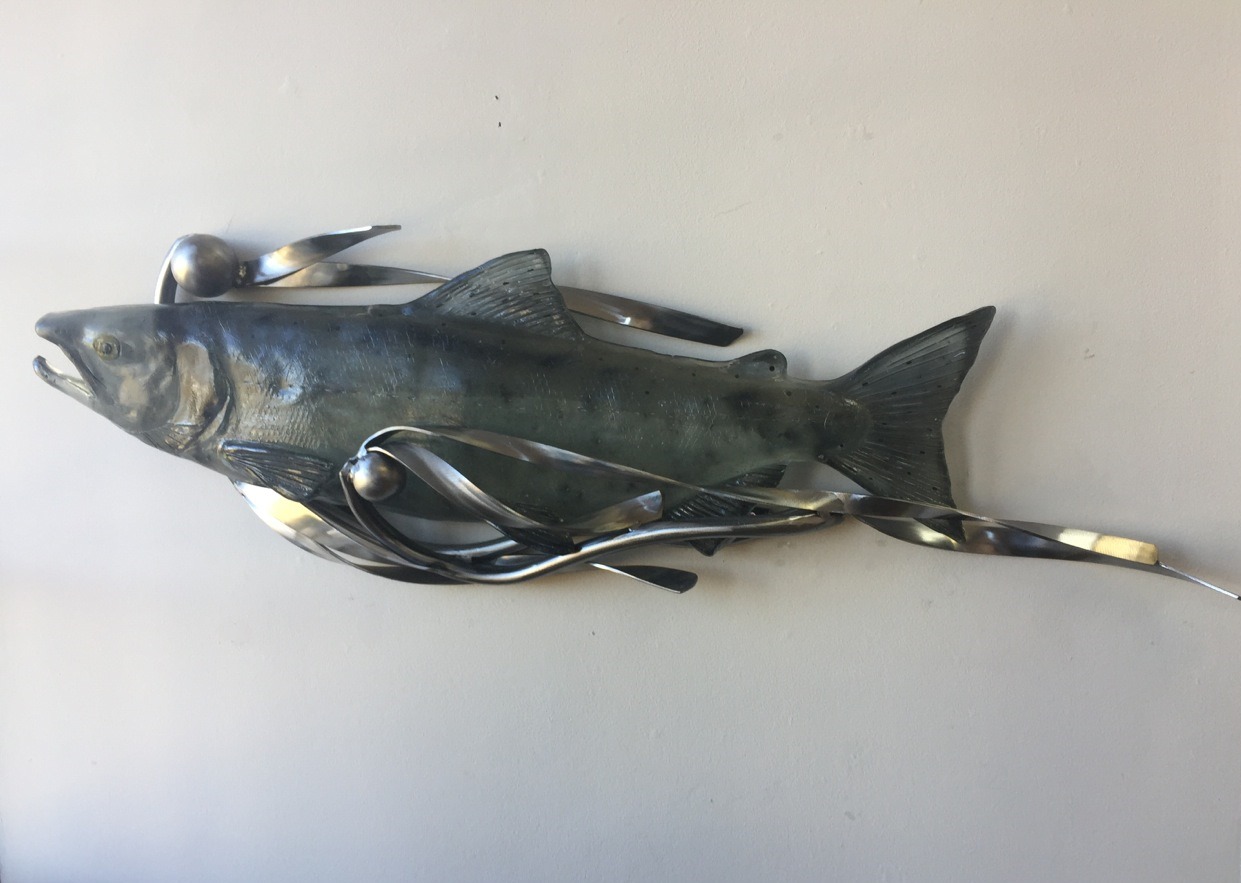



Profile: Christopher Smith
Glaskrafter Art Glass
Christopher Smith began working in Stained Glass in 1975 as an apprentice to the Glass Head Studio, Nelson B.C. That same year, he spent a semester at ACAD, blowing glass. He opened Glaskrafter Art Glass in 1977. The Studio is concerned with stained glass, sandblasted glass and sculptural glass commissions. Christopher has always worked with kiln shaped, cast and fused glass. His Art Glass has been shown extensively at private and public galleries throughout B.C. and Oregon. He has taught glass art at Malaspina College and North Island College and now holds classes and workshops at his studio in Lantzville.
Why Glass Salmon?
The economic, cultural and spiritual importance of Salmon to the Northwest Coast is reflected in the iconic manner and recognizable image of these fish. In pre-contact society, the abundance of this source of sustenance to the First Peoples was a divine gift from the Creator, harvested and used with great respect for its origin. The image of spawning salmon, fighting through great cataracts and rapids, providing themselves to the bears, eagles, wolves and later in their death after a successful spawn, providing nutrients to the roots of the great giant fir, spruce and cedar of the coastal rain forest, is a powerful one.
The settler culture soon found great wealth in the abundance of fish and plentiful timber. Communities sprung up, up and down the coast, to capitalize on these resources. In fact, the modern economy of the Northwest Coast is built on fish and timber.
It is the spiritual aspect of the Salmon that give me inspiration. Each individual fish, one of
I make the Glass Salmon, not to reproduce the fish but to create a likeness in
